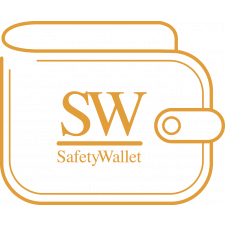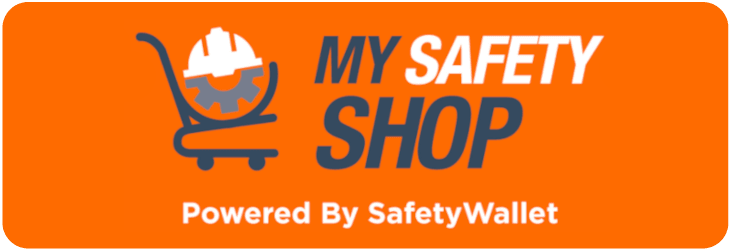Health and Safety Detailed Risk Assessment
What is a Health and Safety Detailed Risk Assessment?
Risk Assessment is a term that is used to describe the process which is involved with:
- Hazard identification along with the identification of risk factors that typically have the potential to cause harm.
- Risk analysis and evaluation associated with the specific hazards identified.
- Hazard elimination or, where it is not possible, the implementation of control measures to minimize, mitigate, control, or reduce the risks of harm.
An OHS detailed risk assessment is a thorough examination of the workplace to identify objects, situations, processes, and other components, which may cause harm to people. Once identification of such is complete, the likelihood and severity of the risks are analyzed and evaluated.
When determining this, the next step is to decide on the measures that can be implemented to effectively eliminate or control the harm that could occur.
Why is an assessment important?
Risk Assessments are crucial as they must form part of an effective OHS Management Plan. They therefore help to:
- Create awareness of hazards as well as risks in the workplace.
- Identification of those who may be at risk.
- Determining whether a control programme may be needed for a specific hazard.
- Determining whether the existing control measures are adequate, or whether additional action is needed.
- Prevention of injuries or occupational illnesses, especially when it can be done during the planning phase.
- Prioritising hazards and their associated control measures.
- Compliance with legal requirements, where they are applicable.
Goal of the assessment
The aim associated with the assessment processes is hazard evaluation, removal, or the minimisation of the risk level by applying control measures, as they are necessary. In doing this, employers can create and ensure a healthier and safer workplace for employees an anyone who may visit the premises.
The goal is to attempt to answer the following questions:
- What can occur and under what circumstances can it occur?
- What are the possible consequences should something occur?
- How likely are the possible consequences to occur and what is their severity?
- Is the risk effectively controlled, or is additional action necessary?
When must an assessment be carried out?
There are numerous reasons over why and when a risk assessment is needed, including, but not limited to:
- Before new processes or activities are introduced in the workplace.
- Before changes are made to existing processes or activities, including when new products, equipment, tools, machinery, and other components are changed or new information regarding harm is made available.
- When hazards are identified in the workplace.
How is an assessment planned?
Typically, assessments are planned with the following considerations:
- The scope of the risk or what must be inspected to identify hazards, whether a specific workplace such as an engineering workshop, or a specific piece of machinery, and so on.
- The resources that are needed such as a trained team, the information resources, and so on.
- The type of risk analysis measures that will be applied, such as the exact scale of parameters needed to provide an effective and relevant evaluation.
- The stakeholders who will be involved such as managers, supervisors, employees, and so on.
- The relevant and applicable laws, regulations, codes, standards, and other considerations.
How is a risk assessment carried out?
Assessments must be carried out by a competent, skilled, and experienced person or a team of individuals who posses working knowledge of the situation which is being examined.
Typically the following few steps are followed:
- Hazard identification
- Evaluation of the risks, their severity and likelihood.
- Identifying the actions which are needed to eliminate the hazard, or where this is not possible, controlling and reducing the risk by using the hierarchy of risk control methods.
- Evaluating to confirm whether the hazard was eliminated, or whether the risk has been controlled effectively.
- Monitoring to ensure that the controls remain effective.
Next it is also crucial to consider the following:
- The methods as well as procedures that are used during the processing, use, handling, or the storage of substances, and other materials.
- The actual and the potential exposure of employees to hazards.
- The measures as well as the procedures that are necessary to effectively control this exposure considering engineering controls, safe work practices, hygiene practices, and facilities.
- The duration along with the frequency of the task.
- The location of the task or activity.
- The machinery, tools, materials, and all other components, which will be used during operations and how they are utilised.
- The possible interactions with other activities that are being carried out in the same area as the one being examined, and how the activity could affect these.
- The lifecycle of the product, process, or service.
- The education and the training that employees have received.
- How employees may react in certain situations.
Hazard Identification
Typically, the goal is to find and record hazards that may be present in the workplace. It could be beneficial to work as a team and to include people familiar with the work area and/or the activity, and those who are not.
Through this, it could ensure that hazards are identified more thoroughly. To be sure that all hazards are found, the following can be considered:
- Consider all the aspects associated with the task or activity.
- Consider non-routine activities such as repairs, cleaning, maintenance, and others.
- Examine the accident, incident, and near miss records.
- Include people who work off-site, either at home, on other sites, and so on.
- Examine how the work is organised and carried out.
- Consider foreseeable unusual conditions such as power outages, emergency situations, and others.
- Determine whether a specific product, machine, or equipment could be changed either intentionally, or unintentionally such as safety guards which could be removed.
- Review phases of the lifecycle thoroughly.
- Examine the risks to visitors as well as other members of the public.
- Consider vulnerable groups of people such as inexperienced workers, employees who have disabilities, new or expectant mothers, and others.
How to know whether the hazard will cause harm
Every hazard that is identified must be studied and evaluated to determine the level of risk associated with it. To do this, the following can be considered:
- Product information and/or the manufacturer’s documentation.
- Employee experience in the task or activity by interviewing employees.
- Legislative requirements and all other applicable standards.
- Industry codes of practice or best practice.
- Health and Safety material such as MSDS and other information.
- Information obtained from reputable organisations.
- Results from tests conducted such as sampling, biological swabs, and others.
- Expertise of an occupational health and safety professional.
- Information on past injuries, occupational illnesses, near misses, and other documentation.
- Observations done on the task or activity.
The following factors that may contribute to the risk level must also be considered:
- The work environment’s layout, condition, and other components.
- Systems of work.
- Range of foreseeable conditions.
- The way the source may cause harm such as inhalation, ingestion, and so on.
- How often, how much, and for how long an employee is exposed.
- The interaction, capability, skill, knowledge, and experience of employees who carry out the work.
Risk ranking and prioritization
The risk ranking and the prioritizing of risks is an effective way to help determine the most significant risks that must be controlled first. This is done by considering the exposure of employees and the potential for incidents, injuries, or illness.
Risks are often ranked and rated according to a 3 x 3 or 5 x 5 risk matrix that has between 1 to 3, or 1 to 5 severity ratings as well as probability ratings.
Hazard control methods
Once the priorities have been established, the next step is deciding on the controls for each specific hazard. The hierarchy of control is as follows:
- Elimination
- Substitution
- Engineering controls
- Administrative controls
- Personal Protective Equipment
Risk Assessment Review and its importance
It is crucial to establish whether the assessment was complete and accurate. In addition, it is also essential to be sure that changes in the workplace have not introduced new hazards or modified hazards that were once ranked according to lower priorities to higher priorities.
Risk review is good practice, and it must be done frequently to ensure that control methods are effective.
Important documentation
Record keeping is crucial, and the level of documentation will depend on the following factors:
- The level of risk involved.
- Legislative requirements.
- Requirements as per management systems that are in place.
The records must clearly indicate the following:
- That a thorough hazard review was carried out.
- That the risks of the identified hazards were determined.
- That effective control measures that are suitable were implemented.
- That all hazards in the workplace were effectively reviewed and monitored.
How does SafetyWallet support its subscribers?
SafetyWallet, in partnership with MAKROSAFE and OHS Online, ensures that subscribers can obtain the highest level of compliance with the Occupational Health and Safety Act, all other Regulations, and more.
MAKROSAFE / SAFETYWALLET / MY SAFETY SHOP are all in Partnership.
Through the assistance and support in the health and safety program of the subscriber, SafetyWallet helps subscribers with the OHS risk assessments that must be conducted to ensure that subscribers are compliant in providing a healthy and safe working environment.
Click on the image below to find a SafetyWallet Solution that suits your business (Branch/Site specific) and get the benefits along with the subscription:
Keeping your workplace legally Health and Safety Compliant may seem like a daunting task. At MAKROSAFE, we have an experienced team of OHS experts available to assist in keeping your company Health and Safety Compliant according to South African Occupational Health and Safety Act 85 of 1993 and Regulations.
The MAKROSAFE Health and Safety Risk Control Package will assist you with your Risk Management Programme.
By signing up with our Health and Safety Risk Control Package, MAKROSAFE will assist you with your Risk Management journey.

-Health-and-Safety-Detailed-Risk-Assessment-Banner-1.jpg)






Comments (1)
Assessments must be carried out by a competent, skilled, and experienced person or a team of individuals who posses working knowledge of the situation which is being examined.
2022-08-26 14:06:08